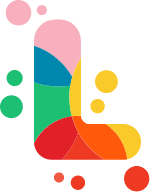Tunisia Primary School Syllabus - Mathematics
The Tunisian primary school mathematics curriculum appears to be based on the Cambridge Primary Mathematics Curriculum Framework. The following outlines the learning objectives for Year 1 (Stage 1):
Thinking and Working Mathematically:
- Specialising
- Generalising
- Conjecturing
- Convincing
- Characterising
- Classifying
- Critiquing
- Improving
Number:
- Counting and Sequences:
- Count objects from 0 to 20, recognizing conservation of number and one-to-one correspondence.
- Recognize the number of objects presented in familiar patterns up to 10, without counting.
- Estimate the number of objects or people (up to 20), and check by counting.
- Count on in ones, twos, or tens, and count back in ones and tens, starting from any number (from 0 to 20).
- Understand even and odd numbers as 'every other number' when counting (from 0 to 20).
- Use familiar language to describe sequences of objects.
- Integers and Powers:
- Recite, read, and write number names and whole numbers (from 0 to 20).
- Understand subtraction as:
- Recognize complements of 10.
- Estimate, add and subtract whole numbers (where the answer is from 0 to 20).
- Know doubles up to double 10.
- Money:
- Recognize money used in local currency.
- Place Value, Ordering, and Rounding:
- Understand that zero represents none of something.
- Compose, decompose, and regroup numbers from 10 to 20.
- Understand the relative size of quantities to compare and order numbers from 0 to 20.
- Recognize and use ordinal numbers from 1st to 10th.
- Fractions, Decimals, Percentages, Ratio, and Proportion:
- Understand that an object or shape can be split into two equal parts or two unequal parts.
- Understand that a half can describe one of two equal parts of a quantity or set of objects.
- Understand that a half can act as an operator (whole number answers).
- Understand and visualize that halves can be combined to make wholes.
Geometry and Measure:
- Time:
- Use familiar language to describe units of time.
- Know the days of the week and the months of the year.
- Recognize time to the hour and half hour.
- Geometrical Reasoning, Shapes, and Measurements:
- Identify, describe, and sort 2D shapes by their characteristics or properties, including reference to the number of sides and whether the sides are curved or straight.
- Use familiar language to describe length, including long, longer, longest, thin, thinner, thinnest, short, shorter, shortest, tall, taller, and tallest.
- Identify, describe, and sort 3D shapes by their properties, including reference to the number of faces, edges and whether faces are flat or curved.
- Use familiar language to describe mass, including heavy, light, less, and more.
- Use familiar language to describe capacity, including full, empty, less, and more.
- Differentiate between 2D and 3D shapes.
- Identify when a shape looks identical as it rotates.
- Explore instruments that have numbered scales and select the most appropriate instrument to measure length, mass, capacity, and temperature.
- Position and Transformation:
- Use familiar language to describe position and direction.
Statistics and Probability:
- Statistics:
- Answer non-statistical questions (categorical data).
- Record, organize, and represent categorical data using:
- Practical resources and drawings
- Venn and Carroll diagrams
- Block graphs and pictograms.
- Describe data, using familiar language including reference to more, less, most, or least to answer non-statistical questions and discuss conclusions.
|

